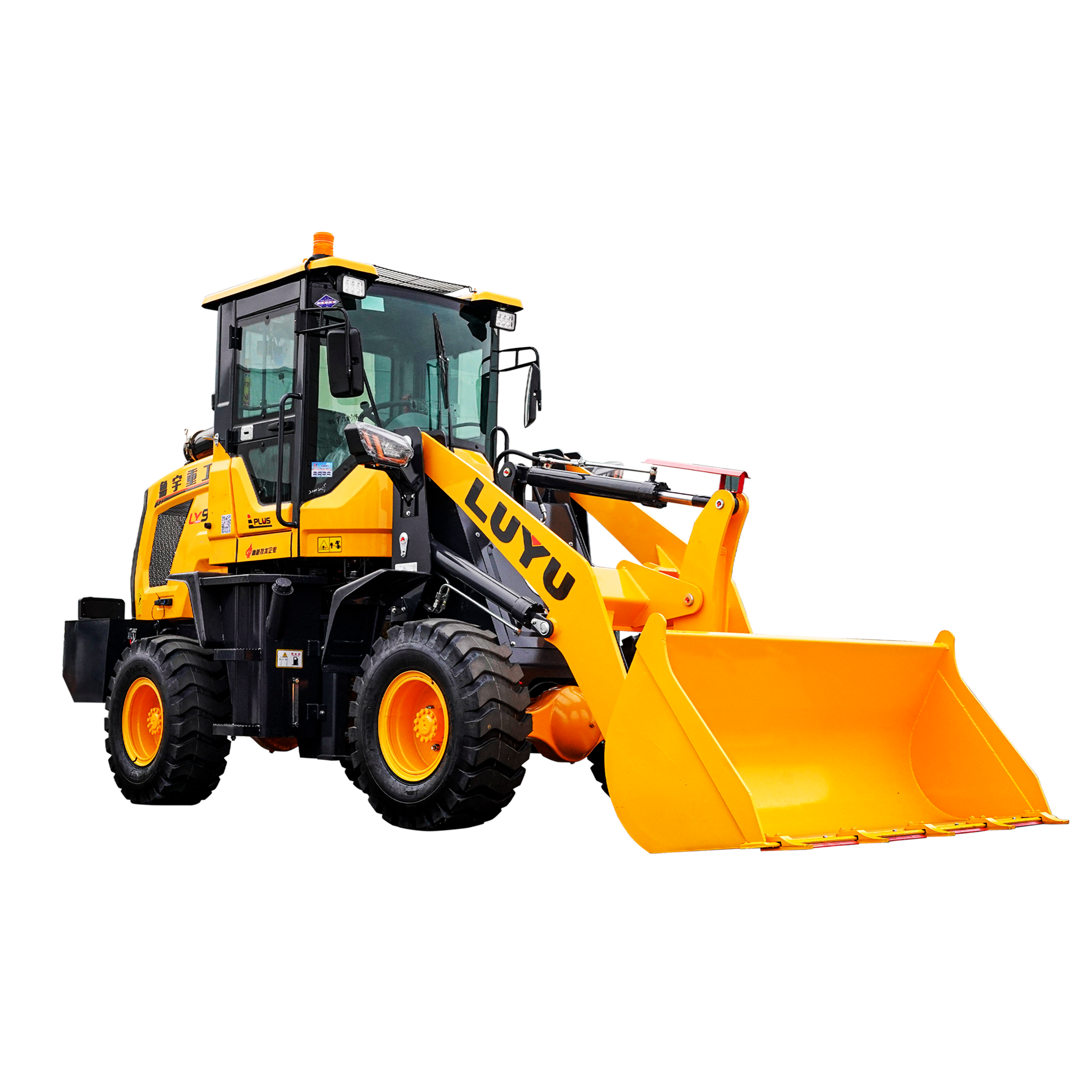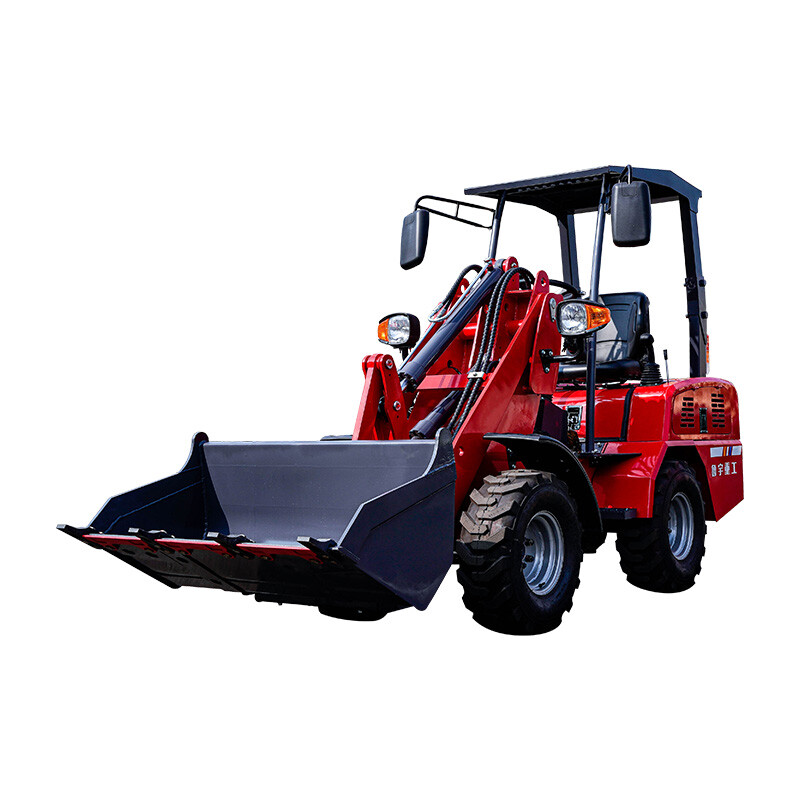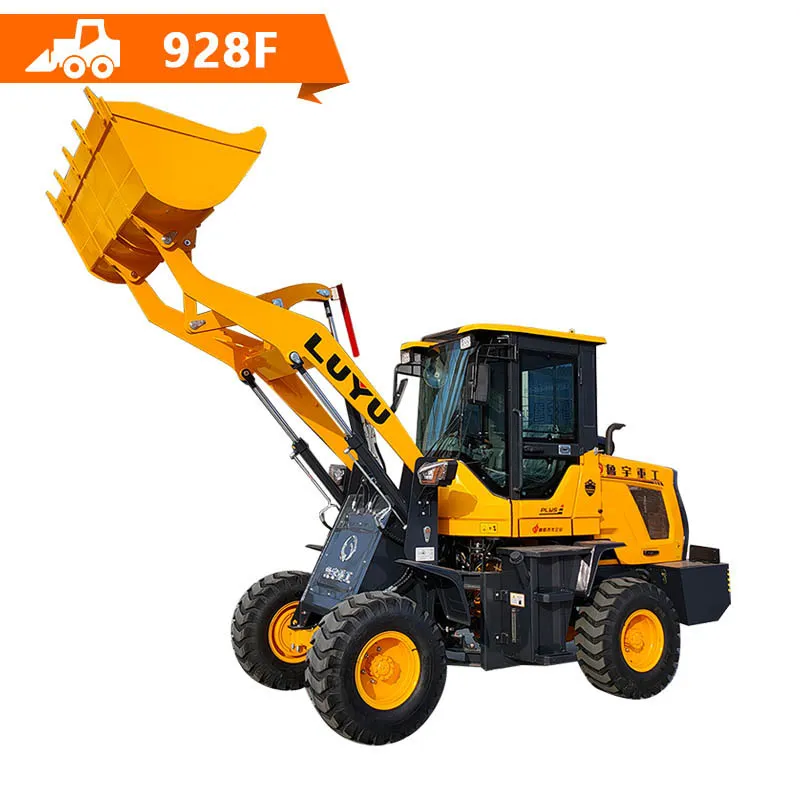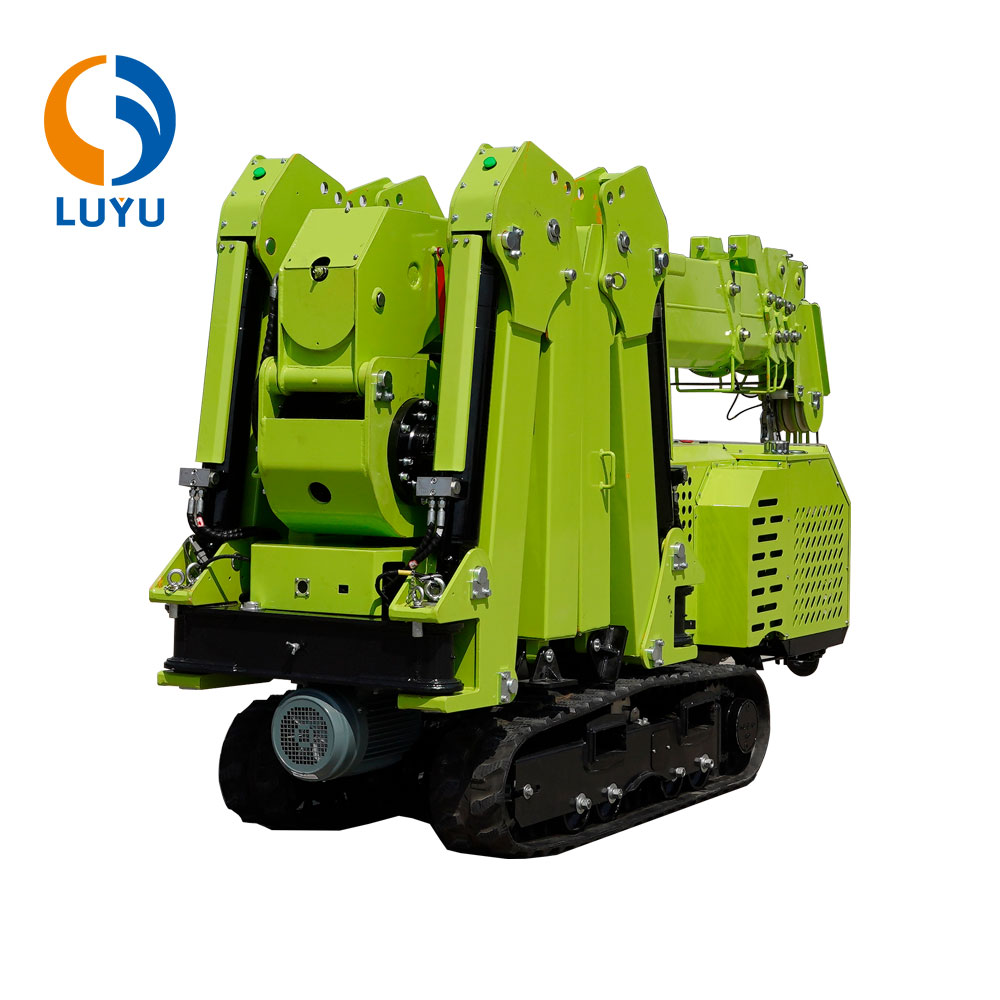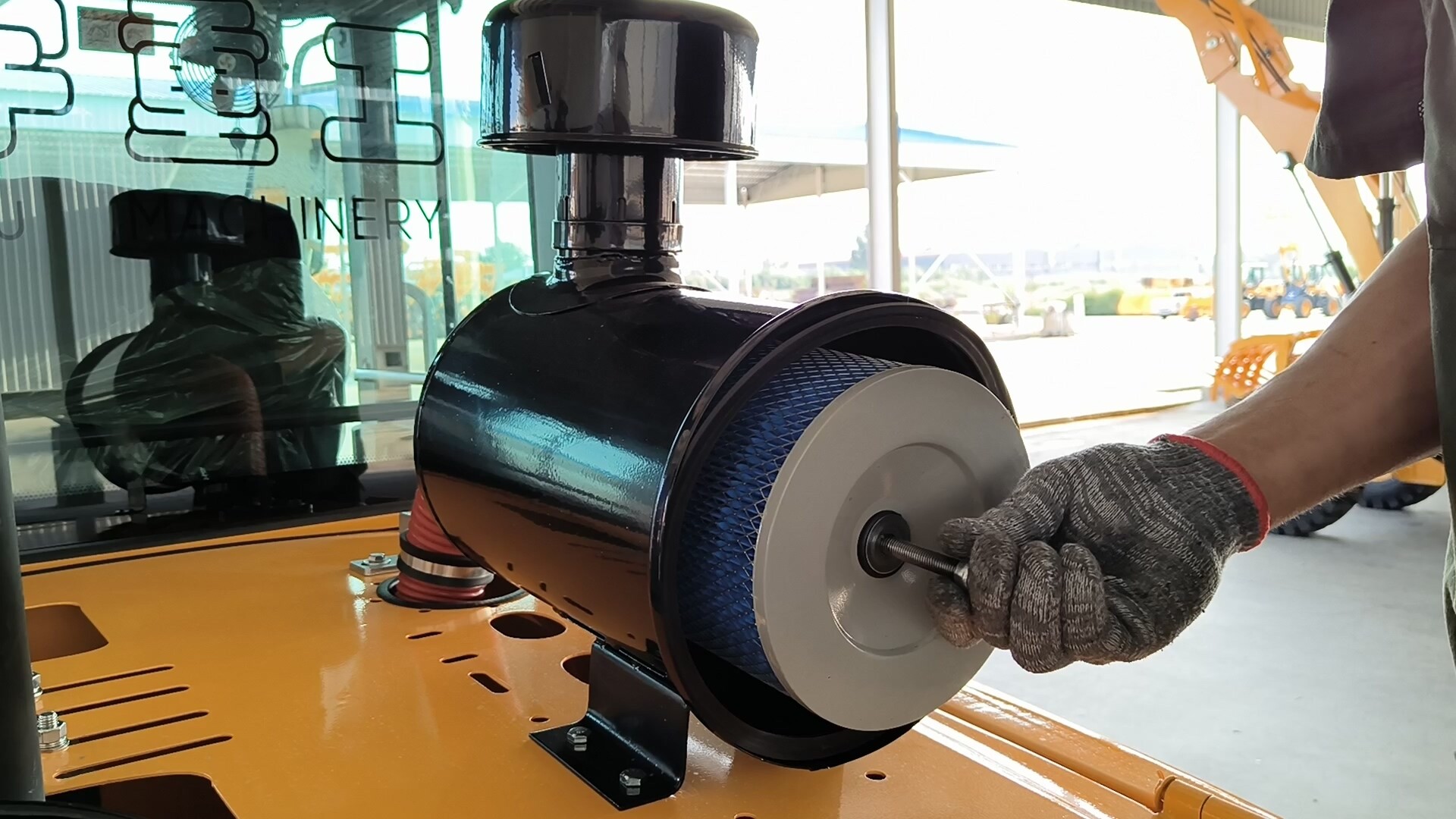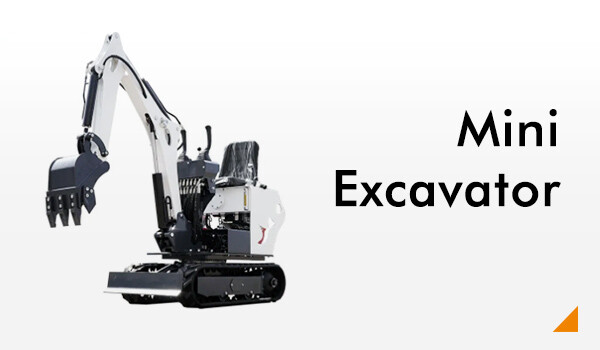As an important equipment in construction machinery, the production process of loader is complex and precise. Understanding the production process of loaders can not only help users better choose equipment, but also provide reference for industry practitioners. In this article, we will introduce the production process of luyu loader in detail, from the axle on line to the safety monitoring of each step, to bring you an in-depth understanding of luyu loader manufacturing process.
1. Axle uplinking
Loader axle on-line is an important part of the assembly process, marking the axle components formally enter the assembly line, laying a solid foundation for the subsequent assembly of the whole vehicle. This step not only requires precise operation skills, but also strict quality control to ensure the perfect combination of axle and other parts of the loader, so as to guarantee the stability and durability of the whole vehicle.
As shown in the picture, workers are working on the installation of the rocker disk for the rear drive axle. Since the loader itself has no shock absorber, the design of the rocker disk can effectively alleviate the vibration during driving and protect the rear drive axle.

2. Installation of the rear frame
The rear frame is one of the core structures of the loader, which is used to connect the axle with the engine and other key components. When installing the rear frame, it is necessary to ensure its precise alignment with the axle to ensure the stability and durability of the whole machine.Mounting the rear frame to a rear axle with a wobble disk is done with a through-center pin connection to ensure a solid connection.

3. Installation of front frame
The front frame is mainly used to support the front structure of the loader, including the cab and arms. When installing the front frame, make sure it is firmly connected with the rear frame to ensure the balance of the whole machine.
4. Transmission installation
Gearbox is the key component of loader power transmission. In this step, the gearbox is mounted on the frame and connected with the engine and axle to ensure efficient power transmission.
5. Installation of torque converter and engine assembly
The torque converter and engine are the power sources of the loader. When installing, make sure the torque converter and gearbox are accurately aligned, and fix the engine assembly to the frame to ensure the power performance of the whole machine.
6. Installation of radiator
The radiator is used to cool the engine and hydraulic system to prevent the equipment from overheating. When installing the radiator, make sure it is tightly connected to the engine and hydraulic system to ensure the cooling effect.
7. Installation of the cab
The cab is the operation center of the loader and provides a comfortable operating environment for the operator. When installing the cab, make sure it is firmly connected with the front frame, and install the instrument panel and control system.
8. Installation of Counterweight
Counterweight is used to balance the weight distribution of the loader and prevent the equipment from tipping over during operation. When installing the counterweight, choose the appropriate counterweight according to the model and use of the loader, and make sure it is fixed firmly.

9. Installation of cab hood
The cab hood is used to protect the internal structure of the cab and enhance the aesthetic appearance of the whole machine. When installing the hood, make sure that it is tightly connected to the cab and does not affect the operator's field of vision.
10. Installation of diesel and hydraulic tanks
Usually the left side is diesel fuel tank and the right side is hydraulic fuel tank. There are also adjusted according to the customer's habits and needs, specific to the text marked on the fuel tank shall prevail.
11. Installation of the arm
The arm is an operational part of the loader, used for shoveling and handling materials. When installing the arm, make sure it is tightly connected to the hydraulic system to ensure operational flexibility and efficiency.
12. Installation of tires
Tires are the walking parts of the loader, which directly affect the mobile performance of the equipment. When installing tires, choose the right type of tires according to the purpose of the loader and make sure they are firmly installed.
13. Installation of lamps
Lights are used to provide illumination to ensure safe operation of the loader at night or in poorly lit environments. When installing lamps, make sure that they are properly connected to the electrical system and that the range of illumination complies with safety standards.

14. Installation of attachments
Attachments are additional operating devices of the loader, such as buckets, forklift frames and so on. When installing attachments, choose the right type according to the user's needs and make sure it is firmly connected to the arm.
15. Safety monitoring
Each process of the automatic assembly line is monitored by a quality inspector, and after the assembly is completed, three detailed test runs will be conducted according to the standardized test sheets. All test drivers have more than 6 years of LUYU working experience to ensure excellent product quality.

Share to :
Inquiry
Our manager will contact you within 30 minutes of working hours.
Related products
 928C Mini Wheel Loader
928C Mini Wheel LoaderEngine type YN25 37KW/50HP Rated load 1500kg Dumping height 3200mm Bucket capacity 0.6m³  906 Compact Wheel Loader
906 Compact Wheel LoaderEngine Yanmar 20.2kW Rated load 600kg Dumping height 2060mm Bucket capacity 0.25m³  LUYU928C 1.5ton Wheel Loader
LUYU928C 1.5ton Wheel LoaderRated power 1OKW/13.5HP Operating weight 1000kg Dumping height 1861mm Digging depth 1825mm  928F 1.5Ton Mini Wheel Loader
928F 1.5Ton Mini Wheel LoaderRated power 1OKW/13.5HP Operating weight 1000kg Dumping height 1861mm Digging depth 1825mm
| Recommended News
 KB3.0 Spider Crawler Crane Operation Manual2025-04-161The KB3.0 spider crawler crane is designed with a crawler traveling mechanism and hydraulic system for lifting, tensioning and winding devices. The crane adopts advanced design methods such as UG 3D modeling, CAE component limit analysis and computer aided design to ensure flexibility, reliability and ease of operation.
KB3.0 Spider Crawler Crane Operation Manual2025-04-161The KB3.0 spider crawler crane is designed with a crawler traveling mechanism and hydraulic system for lifting, tensioning and winding devices. The crane adopts advanced design methods such as UG 3D modeling, CAE component limit analysis and computer aided design to ensure flexibility, reliability and ease of operation. What About China Luyu Mini Wheel Loader?2025-04-151Luyu Machinery has a wide range of product lines in the fields of wheel loaders, mini excavators, wheel excavators, off-road forklifts and various attachments. Our company continues to expand its production scale and improve its production capacity.
What About China Luyu Mini Wheel Loader?2025-04-151Luyu Machinery has a wide range of product lines in the fields of wheel loaders, mini excavators, wheel excavators, off-road forklifts and various attachments. Our company continues to expand its production scale and improve its production capacity. What Is An Air Prefilter For A Wheel Loader?2025-04-151The air prefilter (air filter) of the loader is an important part installed in the engine air intake system, mainly used to filter the air entering the engine, preventing dust, sand and other impurities from entering the engine, so as to protect the normal operation of the engine and prolong its service life.
What Is An Air Prefilter For A Wheel Loader?2025-04-151The air prefilter (air filter) of the loader is an important part installed in the engine air intake system, mainly used to filter the air entering the engine, preventing dust, sand and other impurities from entering the engine, so as to protect the normal operation of the engine and prolong its service life. Top 5 Reasons Why Mini China Excavators are Revolutionizing Construction Projects2025-04-141China's mini excavators are reshaping the global construction industry with five major advantages. This article analyzes its technological innovation and market competitiveness to help you make accurate purchasing decisions!
Top 5 Reasons Why Mini China Excavators are Revolutionizing Construction Projects2025-04-141China's mini excavators are reshaping the global construction industry with five major advantages. This article analyzes its technological innovation and market competitiveness to help you make accurate purchasing decisions!
Send Your Inquiry

